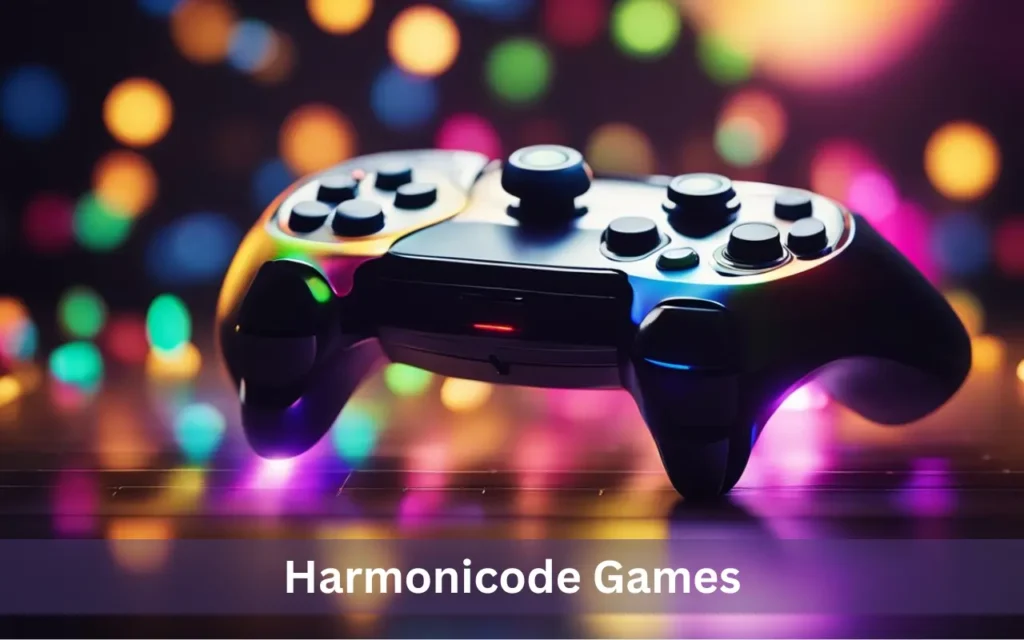Understanding Harmonicode: A Fusion of Sound, Code, and Game Environments

Introduction to Harmonicode
In the growing world of digital entertainment, where visuals and interactivity dominate conversations, sound often plays a quiet but powerful role. Harmonicode emerges as a concept that binds audio and logic through technology. It represents a seamless link between music and programming, especially within interactive media like games. At its core, Harmonicode brings harmony—literally and figuratively—into user experiences by blending sound creation with code-driven systems.
What Makes Harmonicode Unique?
Harmonicode is not just about composing tunes or inserting sound clips into a scene. It refers to a methodical approach where sounds are generated, modified, and executed through programmable structures. Instead of relying on pre-made audio files, developers and sound designers can use software and scripts to produce sounds in real-time, responding to in-game actions and environmental triggers.
This technique opens possibilities for dynamic audio that adapts, reacts, and evolves based on player behavior or narrative progression. The result is an immersive atmosphere that feels alive.
The Core Elements of Harmonicode
To understand how Harmonicode works, we must break it down into its major components:
Audio Programming Languages
At the heart of Harmonicode is code. Audio-centric languages such as Pure Data, ChucK, or even scripting tools within larger engines like Unity or Unreal allow developers to manipulate sound elements in a flexible manner. These languages treat sound as a variable that can be triggered, modified, or looped with precise control.
Sound Design Tools and Software
Digital Audio Workstations (DAWs), sound synthesizers, and effect processors serve as vital tools. While traditional sound designers use these tools to prepare static tracks, Harmonicode practitioners often integrate them with code-based environments to enable dynamic generation.
Game Engines and API Integration
Game engines offer platforms where Harmonicode can be fully expressed. Through API hooks or scripting languages, audio logic can be embedded directly into gameplay code. For example, a player entering a mysterious cave may trigger a lower frequency hum that deepens the longer they stay—this change would be controlled by a harmonicode system written directly into the game’s script.
How Harmonicode Enhances User Experience
Sound has emotional power. It can raise tension, create relief, or signal danger. Harmonicode takes this emotional input and gives it structure. Instead of fixed audio moments, the game can now respond in real-time. This increases the feeling of agency and realism.
Consider a simple game scenario: A player is being chased. The background music starts to intensify not on a timer, but based on how close the enemy is. As the danger gets nearer, the tempo increases, and dissonant notes build. When the player escapes, a calming melody gradually returns. This sound behavior is not pre-arranged but shaped by a harmonicode script reading in-game variables.
Harmonicode in Indie Game Development
Independent developers, often limited in resources, turn to harmonicode-style methods for creative flexibility. Instead of hiring full orchestras or purchasing expensive soundtrack licenses, they can write audio behavior systems that generate mood-appropriate soundscapes dynamically. Not only does this reduce costs, but it also fosters innovation.
For example, an indie developer can build an interactive sound engine that plays notes based on player footsteps, environment temperature, or even inventory status. These unique sound experiences become part of the game’s identity.
Real-Time Audio Scripting: A Closer Look
Real-time scripting allows developers to modify sounds on-the-fly. This is where Harmonicode reveals its deeper technical beauty.Imagine a simple function like this (in pseudocode):
In this small snippet, a condition checks the player’s health. If it’s low, the background sound changes. Such decisions are not made by a composer but by lines of code. And yet, they have emotional and narrative effects.This is the true spirit of harmonicode—using code to create musical logic.
Interactive Sound Versus Static Sound
Traditional games use static sound libraries—pre-recorded tracks that loop or repeat. These may work fine for linear narratives. But they fall short when interactivity and choice become central to the experience.
Interactive sound, on the other hand, behaves like a second game system. Just as graphics update with each frame, harmonicode ensures that audio updates with each event.
For instance:
- An object in the environment emits a hum whose frequency changes when the player alters its position.
- The main theme rearranges itself based on player achievements or unlocked quests.
- Environmental weather sounds evolve with time-of-day transitions, not just change tracks but alter pitch and rhythm.
Educational Value of Harmonicode
Harmonicode is not only for game creators. It has educational applications too. By combining programming with musical creativity, students can learn both coding logic and audio composition. Schools and coding camps have started introducing simple audio programming tools to teach concepts like loops, conditions, and real-time processing in an artistic context.
The engagement level rises when students hear their code come alive through sound. It builds cross-disciplinary skills that range from logic construction to acoustic awareness.
Challenges in Implementing Harmonicode
While the potential is exciting, working with harmonicode systems requires a strong balance of technical and artistic skill. Some challenges include:
- Performance Overhead: Real-time sound synthesis can demand high processing power.
- Debugging Complexity: Bugs in harmonicode scripts may result in unpredictable sound behavior that is hard to trace.
- Tool Compatibility: Not all game engines offer deep audio scripting integration, so custom bridges may be necessary.
Despite these challenges, the rewards often outweigh the efforts, especially for those seeking unique player experiences.
The Future of Harmonicode
As virtual and augmented reality evolve, audio will become even more central. Harmonicode may eventually expand beyond gaming to applications in virtual tours, training simulations, or immersive storytelling.
Imagine a virtual museum where the background sound changes depending on which exhibit you’re near. Or a meditation app that adjusts its tones based on your breathing rhythm captured via a sensor. These are not futuristic dreams but potential use cases being explored through harmonicode principles.
Conclusion
Harmonicode stands at the intersection of art and algorithm. It represents a deeper way of thinking about sound—not as a background layer, but as an active participant in digital experiences. Whether used in games, simulations, or learning environments, harmonicode enriches interactions by giving sound a responsive, living presence.
As technology evolves and more creators experiment with audio-based programming, harmonicode may shift from being a niche concept to a cornerstone in immersive media development. Those who embrace it now are not just building sounds—they’re scripting emotions, atmospheres, and new realities.




